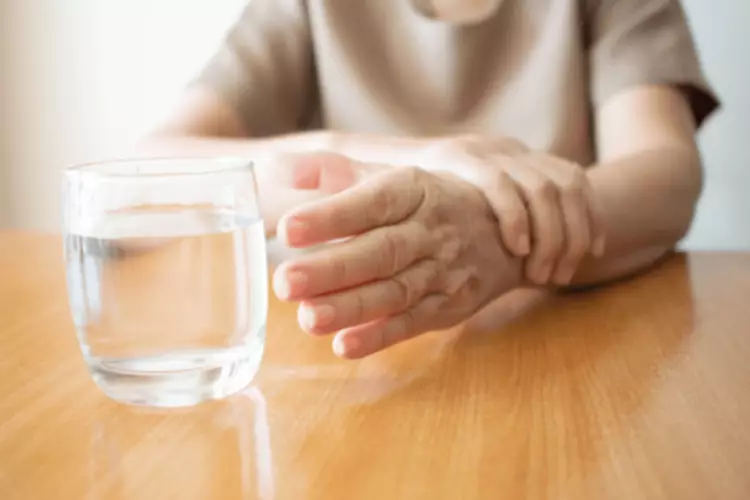News & Notice
공지사항
| 제목 | What Are Sober Living House Rules? | ||
| 작성일 | 2022-10-12 | 작성자 | 원어민강사 |
Content
Central to recovery in SLHs is involvement in 12-step mutual help groups (Polcin & Henderson, 2008). However, some houses will allow other types of activities that can substitute for 12 step groups, provided they constitute a strategy for maintaining ongoing abstinence. Like sober living homes, residents are typically expected to contribute to household chores, such as cleaning and making meals. Even people who are highly motivated and committed to staying sober often struggle in early sobriety if they don’t have the right support. As a chronic disease, addiction can be difficult to treat, but it’s certainly not hopeless.
Many sober houses also have agreements with residents, requiring them to attend 12-step programs or similar support groups. While some programs have specific timelines, by and large residents are allowed to remain in sober living houses for as long as they are willing to pay rent. The most important factor determining one’s length of stay should be the needs of the individual resident.
Recovery Advocacy
Many individuals attempting to abstain from alcohol and drugs do not have access to appropriate housing that supports sustained recovery. Our study found positive longitudinal outcomes for 300 individuals living in two different types of SLHs, which suggests they might be an effective option for those in need of alcohol- and drug-free housing. Improvements were noted in alcohol and drug use, arrests, psychiatric symptoms and employment. Although criminal justice referred residents had alcohol and drug use outcomes that were similar to other residents, they had a harder time finding and keeping work and had higher rearrest rates. Areas for further research include testing innovative interventions to improve criminal justice outcomes, such as Motivational Interviewing Case Management (MICM) and examining the community context of SLHs.
ORS is an outpatient substance abuse treatment program located in Berkeley, California that treats approximately 800 clients per year. Most of the clients are low income and many have history of being homeless at some point in their lives. Because a large number do not have a stable living environment that supports abstinence from alcohol and drugs, ORS developed SLHs where clients can live while they attend the outpatient program. The houses are different from freestanding SLHs, such as those at CSTL, because all residents must be involved in the outpatient program. Most residents enter the houses after residing in a short term homeless shelter located near the program. At admission, nearly all residents are eligible for some type of government assistance (e.g., general assistance or social security disability) and use those funds to pay SLH fees.
OXFORD HOUSE
These homes allow for independence while guided by a set of recovery-focused house rules, standards, and expectations. Visit the Vanderburgh House website to learn more about their sober homes. Unlike halfway houses, though, sober living houses allow residents to stay as long as necessary, often over a year. Since sober living homes are funded by residents, they tend to be more democratically run and less vulnerable to the whims of a landlord or state budget. Many people also opt for sober living homes over halfway houses because they are uncomfortable with formal treatment facilities.

Most of the time, residents share communal spaces, like kitchens, living rooms, and backyards. Sober living is just like it sounds, a place to stay where you’ll have a supportive community and can start your new life free from alcohol or other drugs. Residents in sober-living homes commit to abstaining from substance use while participating in outpatient programming or after completing inpatient drug rehab.
What To Expect In A Sober Living Home
Since sober living typically follows addiction treatment, getting a referral from the treatment provider is recommended. Other referral sources may include the criminal justice system, a mental health professional, Twelve Step meeting participants, or friends and family. sober house Whatever the source of the referral, take a tour of the facility and talk to the people living there to decide if it’s the right fit for you. This support system allows residents to avoid the isolation that can sometimes come with returning home while in recovery.
- The Calm has been providing a service to anyone who is struggling with addiction and mental health problems for over 4 years now.
- Areas for further research include testing innovative interventions to improve criminal justice outcomes, such as Motivational Interviewing Case Management (MICM) and examining the community context of SLHs.
- The best course of action for anyone who wants to get clean and sober is to seek help and make use of the resources of addiction experts.
- Some examples of additional services may include transportation to appointments, recovery coaching, meals and gym memberships.
As you likely know, it is hard to ignore temptation or cravings, especially in the early stages of recovery. Some houses have a “residents’ council,” which functions as a type of government for the house. If you’re ready to start a sober living home of your own, consider joining the exceptional Eudaimonia team. Our Sober Living Manager app is available on the Apple Store and Google Store.
These are residential facilities that provide structure and support for those healing from addiction. They are designed to be a transitional space from residential treatment to mainstream society. A sober living house is a peer-managed home designed to help people maintain sobriety.

If someone continuously breaks the rules (although we recognize relapse is normal), they may not be allowed to stay any longer. This helps keep the environment (and expectations) as consistent as possible. The two types of recovery houses assessed in this study showed different strengths and weaknesses and served different types of individuals.
Sober Living Homes
Residents of sober living facilities typically stay between 6 to 12 months. However, there is no limit to how long an individual can remain in sober living, provided they continue to follow all the rules. However, the length of time you stay in a sober living home depends on many factors. These can include your recovery goals, your progress in recovery, the state of your support system, and your financial situation.
In treatment or a transitional home, you will re-learn how to establish a regime and maintain a healthy lifestyle. You will re-build important life skills – from something as simple as doing laundry, to more difficult obligations like finding employment – and re-establish personal responsibility. Living in a sober house or residential treatment can also help reduce loneliness, which is an inherent part of the addiction cycle. You may have cut ties with the good people in your life, or withdrew from family members in fear of judgement and rejection. You will not be alone – there will be people literally living beside you, with very parallel experiences.
Join Our Network and Let Us Help You Open and Run Your Own Sober Living House
In general, sober living homes are less expensive than traditional treatment facilities or inpatient programs. This is because sober living homes do not provide 24-hour medical care or supervision. Sober living homes typically require residents to pay rent, which generally covers the cost of food, utilities, and other expenses. Some sober living https://ecosoberhouse.com/ homes may also require residents to contribute to a shared household fund. Not all sober living homes accept insurance, so residents may need to pay for their stay out-of-pocket. People usually go to sober living residences after they have done drug or alcohol addiction treatment, and their treatment provider may give them a referral for one.
Where do sober people socialize?
Sober socializing can include trips to coffee shops, theaters and other entertainment venues that do not serve alcohol. While it may not be possible to avoid all incidents of exposure to alcohol or drugs, minimizing this contact is a great way to maintain sobriety for most recovering addicts.
